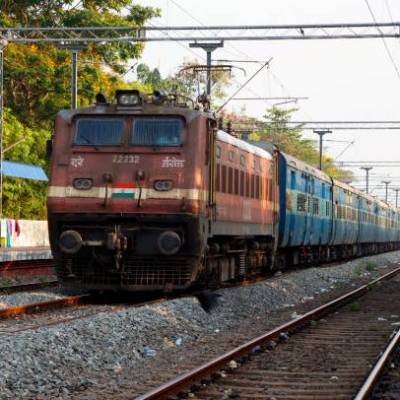The Indian Railways have failed to enhance train speed and punctuality despite spending Rs 2.5 lakh crore on infrastructure over a decade and adopting ‘Mission Raftaar’ in 2016-17.
According to a report presented by the Comptroller and Auditor General (CAG) in Parliament during the Budget session, the Railways have failed to enhance their mobility results.
As part of the Mission Raftaar, by the end of 2021-22, the Railways planned to boost passenger train average speeds to 75 km/h from 50 km per hour and freight train average speeds to 50 km per hour, from 25 km per hour.
As per the CAG audit, passenger train speeds have remained nearly constant while freight train speeds have decreased to 23.6 km per hour.
The research revealed that in 2019-20, the average speed of mail and express trains was just 50.6 kmph, and the average speed of cargo trains was only 23.6 kmph.
According to the railway ministry, the poor pace is due to increased passenger train strain on the current rail infrastructure.
The CAG calculated the average speed of 2,951 express trains travelling in India based on the time and distance travelled between the source and destination stations.
Of them, 2.1% (62) averaged greater than 75 km per hour. The majority of express trains (37%) averaged speeds between 55 and 75 km per hour. There were 933 trains (31%) that averaged 40-50 kilometres per hour. A total of 269 express trains (9.4%) averaged a speed of fewer than 40 kilometres per hour.
According to the CAG, there is a little increase in the speed of these express trains, but this has come at the expense of other passenger trains.
It reported that an express train would usually take 19 hours 52 minutes to go 1,000 km in 2012-13, but the time had decreased to 19 hours 47 minutes in 2019-20.
In 2012-13, non-express passenger trains would travel 1,000 km in 27 hours 37 minutes. These trains took 29 hours 51 minutes to go the same distance in 2019-20.
Similarly, in 2012-13, electric multiple units (EMUs) that typically travel short distances took 1 hour 13 minutes to traverse 50 km, but by 2019-20, they were taking 6 minutes longer.
There is also a maximum permitted speed (MPS) that a train can go on specified lines. As per the audit, this MPS hasn’t been updated in a long time.
The ministry said that there has been a rapid increase in the number of passenger services, with the Indian Railways introducing around 200 trains every year on average, without commensurate enhancement of the infrastructure works.
The experts said that the problem of slow train speed, if not addressed, the railroads may face financial difficulties.
Also read: Indian Railways to buy 100,000 more wagons in next 3 years


